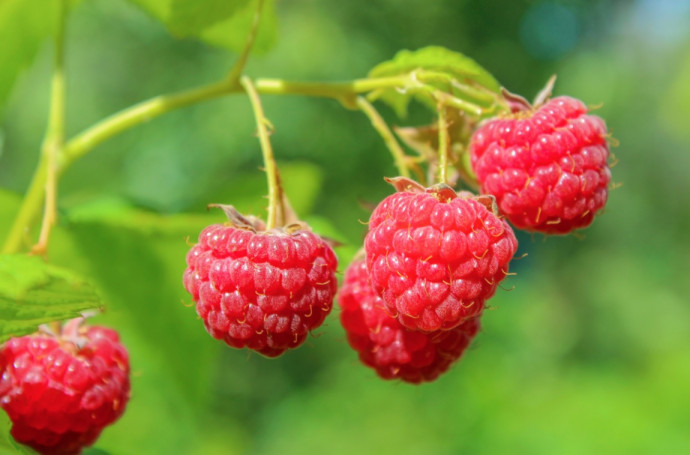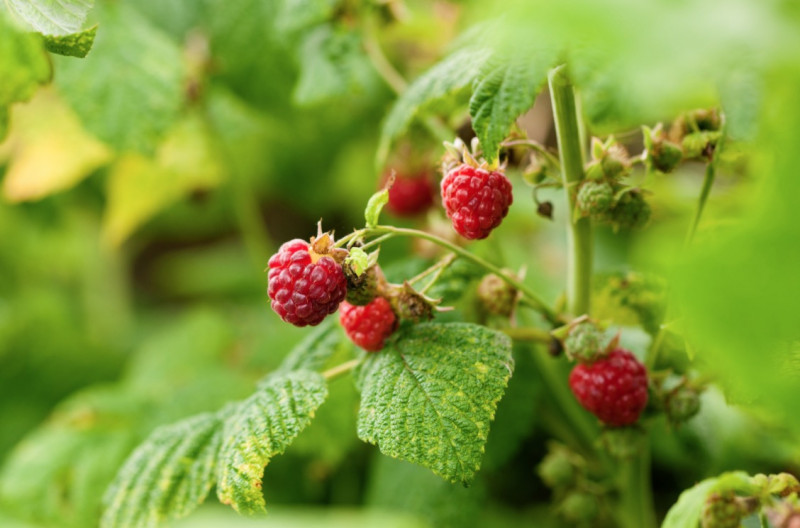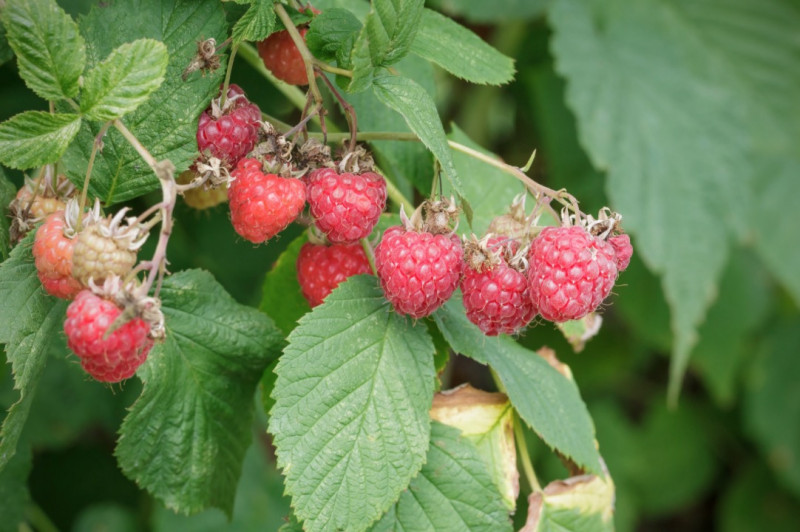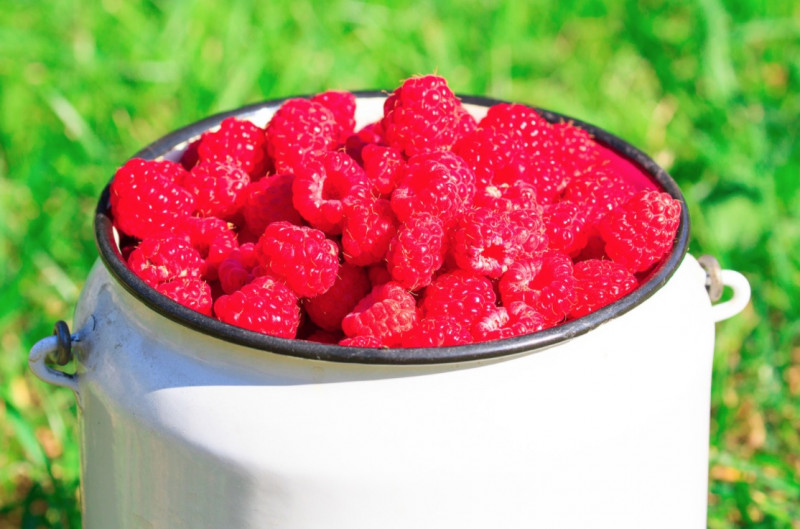How to Grow Wild Raspberry Bushes Guide + Tips

Growing your own juicy raspberries is easy and rewarding. In a small space, raspberries yield a phenomenal quantity of ravishing berries—and they fruit year after year with proper care. Raspberries can be harvested all the way from midsummer through to the first frost. Raspberries are not just another tasty berry; they are loaded with healthful attributes. They're high in fiber and contain vitamin A, folate, antioxidants, and numerous minerals; the juice contains vitamin C; and those sometimes-annoying little seeds contain vitamin E. And, of course, if you have a raspberry patch, you have endless dessert possibilities.
With the right type of plant and a good spot to grow it, you can raise plump raspberries in your own backyard. With the right care and once everything is in place, your raspberry patch will provide you with many years of satisfaction. To help your raspberry plants thrive and produce a bumper crop each year, make sure you choose the best variety for you, plant in a good spot with plenty of sun, and prune them back in the right season so they'll keep producing fruit year after year.
Discover a simple guide and tips on how to plant, grow, harvest, and prune raspberries!

Varieties of Wild Raspberry Bushes
There are two notable varieties of wild red raspberry bushes: summer-fruiting and ever-bearing.
Summer-fruiting: These raspberry bushes produce one crop each year in the summer. Berries grow once on second-year branches called floricanes.
Ever-bearing: These raspberry bushes produce in the fall. This type of bush creates berries on first-year canes called primocanes. If its producing canes are left, they can also produce berries the following summer.
Light
Wild raspberries can grow in full sun to partial shade, but prefer more sun.
If you notice a white spot on some of your red berries, don’t worry, they’re just a little sunburned. Thankfully, this does not affect anything other than their look.
Soil
Wild red raspberries love rich, fertile soil. Another important aspect is to be sure that the soil is well-draining since raspberries are susceptible to root rot. Adding compost not only helps with soil fertility, but it also helps with drainage.
Water
Your wild raspberries need consistent water to produce juicy berries. In fact, raspberries like about an inch of water every week during their growing season. A rain gauge is a simple way to check how much water has been received.
Pay particular attention to how much water your plant is getting while it is first getting established, and supplement when needed.
Be sure the water is not splashing all over the leaves and stems. Raspberries and very susceptible to a variety of fungi, such as blight. Wet leaves only encourage fungi to grow. Water close to the soil to avoid this issue.
Temperature and Humidity
Since wild red raspberry bushes are native in cooler regions, they prefer moderate temperatures and humidity. If you live somewhere with particularly hot summers, try planting your raspberry bushes in partial shade to protect them from the heat.
Fertilizer
Keep your soil rich and fertile and your raspberries will thank you with an abundance of berries. Depending on the richness of your soil, additional feeding could be needed.
Use a well-balanced fertilizer made for fruiting bushes, like a 10-10-10 fertilizer, in the spring and into the early summer. During the first year, your raspberries may appreciate being fertilized twice. After that, they may do better with a single annual application.
Propagating Wild Raspberry Bushes
While growing your raspberries, you may notice a little raspberry plant popping out of the ground some distance away from the mother plant. These are called suckers. They can be dug up and used to start new raspberry bushes. Here’s how:
1. Gently dig up the new plant, or sucker, with a shovel or with your hands. Be sure to wear gloves to avoid any picks from their thorns.
2. Choose where you would like your new raspberry plant to grow, making sure it is at least 24” away from your other plants to allow room to grow. Amend the soil with compost or fertilizer and plant your new bush.

Pruning Wild Raspberry Bushes
Knowing what variety of wild raspberry bush you have is important when it comes to pruning since summer-fruiting and ever-bearing varieties require different pruning methods to maximize your berry yield.
However, yearly trimming will help your bush stay healthy no matter what kind of variety you have. Here’s how:
- Summer-fruiting: Since this variety only produces fruit on floricanes, be sure not to prune your primocanes. Your primocanes are always green, so they should be easy to identify. Floricanes, on the other hand, develop brown bark. Once your floricanes have produced their fruit for the year, they will begin to die off. After this, you can prune them down to keep your plant healthy and manageable.
- Ever-bearing: For this variety, there are two possible pruning methods you can use depending on the results you want. The first method is simply pruning your plants down as soon as they are done producing fruit. The second method entails leaving these canes until next summer. That way, you may get a crop of berries from both the new primocanes and the floricanes you left from last year. The floricanes left from the previous year will give you their berries in the summer as opposed to the primocanes’ fall harvest. If you do this, be sure to prune your floricanes in late winter or early spring to keep them clean and ready for new growth.

Harvesting Wild Raspberries
Harvesting your juicy berries couldn’t be easier. Before you start, you may want to grab a pair of gloves to help you avoid the raspberry bush thorns. When you are ready, simply look for full, red berries and give them a gentle pull. Ripe berries will slip right off their inner white cores. If it doesn’t easily pop off, don’t force it. Leave it longer to ripen fully.
A quick tip about storage: raspberries do not stay fresh for long. Be sure to enjoy them quickly. If you plan on storing them, don’t wash them. This will help you to avoid mushy or moldy raspberries. Instead, wash your berries right before you eat them.
